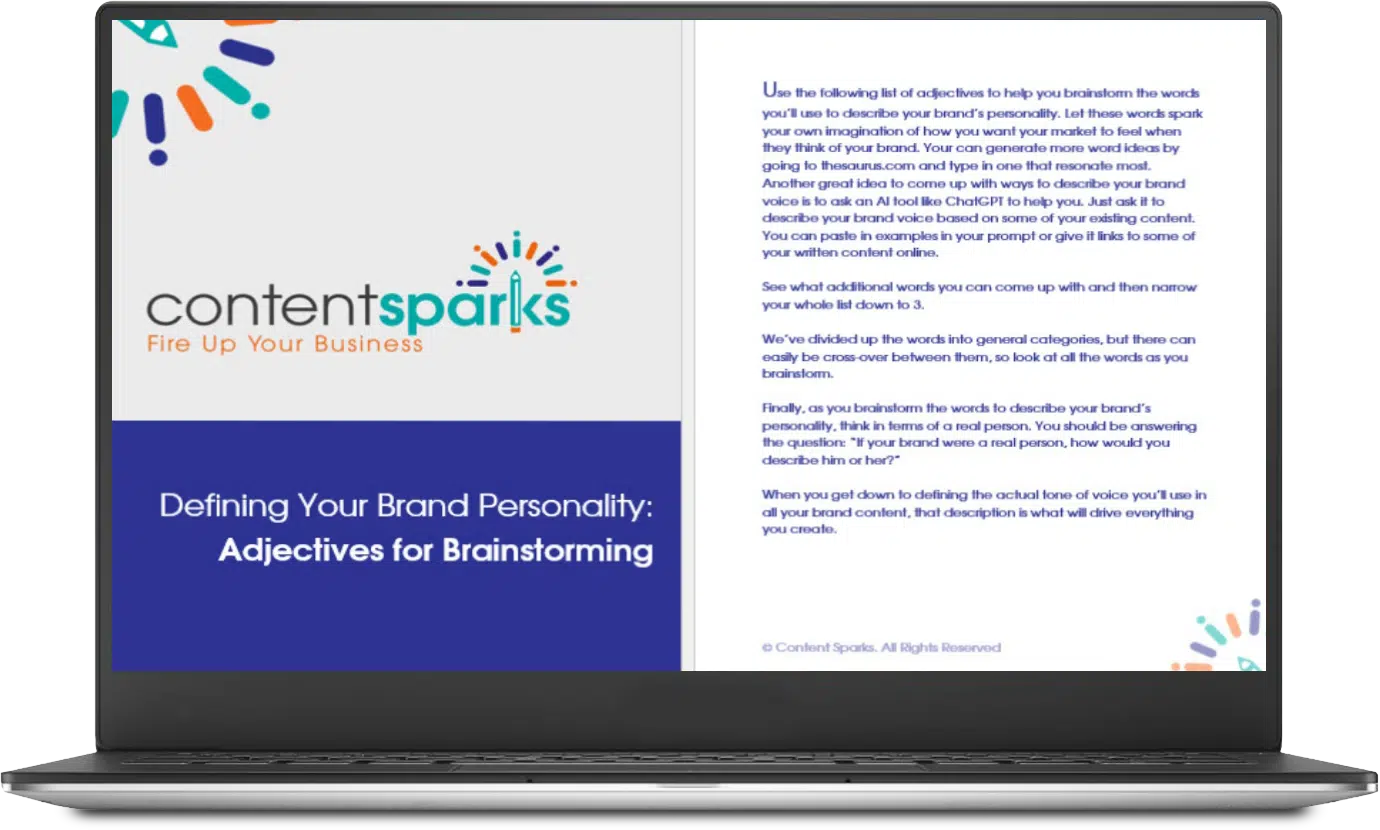Brand Voice: Does Your Content Sound Like You?
0 comments
0 comments
Does your market know who YOU are, as a person? If you are the face of your company, such as a coach or author, it's a given that people will associate your brand with you.
However, if you're a business where your product or service is the brand, it's a little more difficult for your market to recognize you. And in either case, if you don't have a clear brand voice, it's unlikely that anyone will recognize you without a name, logo, or face.
Read on to find out how you can make your business stand out.
When people can't distinguish your content from others', you're just another faceless business entity.
And it's impossible for customers to form a true connection with someone who has no personality.
Having a distinct sound and feel to all your content changes all that. It makes you stand out from everyone else in your market. And when the voice of your brand is consistent in all your content, people know they can talk to you and have a relationship.
But your brand voice consists of not just the words you use, but also how you put them all together – word choice, grammar, sentence structure, etc. It reflects the personality of your brand through the tone of voice you express in all your content, including visuals and multimedia.
So, the main question you need to answer is…
Or, looking at it another way, if you met your brand at a social event and had a conversation for an hour, how would you describe it afterwards? What personality traits does it exhibit?
And on the flip side, how do you want your customers to describe you after they've had a chance to get to know you a little? How do you want them to feel about you?
Your brand needs to have a personality in order to make a connection with your ideal customers. People remember your character traits and the voice you speak with, but they don't remember a faceless entity that speaks in a generic, flat tone.
Once you've clearly defined your brand personality, you can take on the task of describing the tone of voice for all your content.
So, how do you go about answering that key question and defining your brand voice?
Here are the 3 main steps to get you on the right path:

As I mentioned before, you need to describe your brand as if it were a real person. Use the following to hone in on your description:
Here's an example from an article in Contently:
“If your brand was the person at the dinner party, who would they be? The gadget freak who snagged the latest iPhone a week before it went on sale? The honest and kind friend you’d consult while getting dressed for a date? The mad scientist determined to find a way to make fuel out of pencil shavings?”
Base your tone of voice on that description of the type of ‘person' you are as a brand.
Need help brainstorming?
Ask an AI tool like ChatGPT to help you. Just ask it to describe your brand voice based on some of your existing content. You can paste in examples in your prompt or give it links to some of your written content online.

Download a copy of the FREE Cheat Sheet now!
Want a handy cheat sheet for defining your brand voice?

Here's where you get down to the nitty gritty. You need to detail all the types of language you'll use in your content.
The best way to do this so that it's easy for anyone to follow is to create a brand voice ‘chart'. Be sure to include the following in your language guidelines chart:
Keep separate descriptions of your brand voice that you want used for different types of content. Then specify the voice the AI tool should use when you give it a prompt asking to write some content. If you're using a tool like ChatGPT or Canva that allows you to save your voice style/tone/specifics, that's even better!

Even if you're the only person creating content in your business, you'll need to ensure you follow the guidelines you've set for your brand voice.
But it's rarely the case that even solo entrepreneurs operate entirely alone.
Anyone you hire, from the person who designs your latest product cover graphic to the virtual assistant handling your webinar set up needs to know the details of your brand voice.
So keep your carefully detailed brand voice guidelines up to date in a shareable document.
And make sure that communicating your brand voice is a priority whenever onboarding a new team member or outsourcing a task to a freelancer.
In fact, make it a point to use your brand tone and voice in EVERYTHING you do. People will start to naturally take on that tone the more they hear it.
Create a list of your brand voice guidelines in a shareable Google Doc that you can keep regularly updated. In that doc, give examples of prompts that you and your team have found effective for creating creating content in your preferred AI tool.
We've put together a big list of adjectives and some fill-in-the blanks questions to get you started.
Just click on the image and button below to download your brand personality cheatsheet:
Expressing Your Brand Voice
Teach Yourself. Then teach your audience.

When you purchase a license to any of our ready-to-go course kits, you get the rights to edit it any way you want (or leave as-is) and add your own name and branding.
Then use your new course to:
Enjoy!

Tags